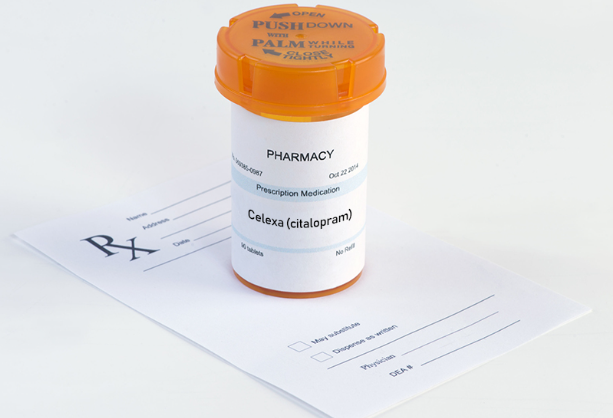Fibromyalgia is a complex and often misunderstood condition, marked by widespread pain, fatigue, and cognitive difficulties. While no cure exists, many treatment options focus on managing symptoms to improve quality of life. Among these treatments, the use of antidepressants, particularly Fluoxetine, has gained attention. But how effective is Fluoxetine for fibromyalgia? In this article, we explore its potential benefits, limitations, and how it compares to other treatment approaches.
Understanding Fibromyalgia and Its Challenges
Fibromyalgia is a chronic pain disorder characterized by symptoms such as:
- Widespread musculoskeletal pain
- Chronic fatigue
- Sleep disturbances
- “Fibro fog” (memory and concentration problems)
- Depression and anxiety
The exact cause of fibromyalgia remains unclear, but it is believed to involve abnormal pain processing in the brain, heightened sensitivity to stimuli, and possibly imbalances in neurotransmitters like serotonin and norepinephrine. Because of these factors, antidepressants like Fluoxetine have been considered for symptom relief.
What is Fluoxetine?
Fluoxetine, commonly known by its brand name Prozac, is a selective serotonin reuptake inhibitor (SSRI) primarily prescribed to treat depression, anxiety disorders, and obsessive-compulsive disorder. By increasing serotonin levels in the brain, Fluoxetine helps regulate mood and emotional well-being. Given that serotonin imbalance is linked to fibromyalgia, Fluoxetine has been investigated as a potential treatment.
Fluoxetine’s Role in Managing Fibromyalgia
Fluoxetine is not FDA-approved specifically for fibromyalgia, but research suggests it can help manage certain symptoms, particularly mood-related issues. Below, we break down its potential benefits:
1. Reducing Pain
Some studies suggest that Fluoxetine may help reduce pain intensity in fibromyalgia patients. This effect is thought to stem from its ability to increase serotonin levels, which can modulate pain perception in the brain.
2. Improving Mood
Depression and anxiety are common among fibromyalgia patients, and Fluoxetine is widely recognized as an effective treatment for these conditions. By stabilizing mood, Fluoxetine can indirectly improve overall quality of life.
3. Boosting Energy
Chronic fatigue is a hallmark of fibromyalgia. While Fluoxetine is not a stimulant, its impact on mood and serotonin levels may help alleviate the sense of exhaustion often experienced by fibromyalgia patients.
4. Improving Sleep
Although Fluoxetine is not primarily a sleep aid, managing anxiety and depression can indirectly improve sleep quality. Better sleep, in turn, can help reduce fibromyalgia symptoms.
Limitations and Considerations of Fluoxetine for Fibromyalgia
While Fluoxetine offers several potential benefits, it is not a one-size-fits-all solution. Here are some limitations to consider:
1. Limited Pain Relief
While Fluoxetine can modulate pain to some extent, it is generally not as effective for fibromyalgia-related pain as other medications like pregabalin or duloxetine, which specifically target nerve pain.
2. Side Effects
Common side effects of Fluoxetine include:
- Nausea
- Insomnia
- Drowsiness
- Headache
- Gastrointestinal issues
These side effects may outweigh the benefits for some fibromyalgia patients, especially if they experience heightened sensitivity to medications.
3. Delayed Effect
Fluoxetine may take several weeks to show noticeable results, which can be frustrating for patients seeking immediate relief from symptoms.
4. Not a Cure
Like most treatments for fibromyalgia, Fluoxetine focuses on symptom management rather than addressing the underlying causes of the condition.
How Fluoxetine Compares to Other Fibromyalgia Treatments
1. Fluoxetine vs. Duloxetine
Duloxetine, another antidepressant, is FDA-approved for fibromyalgia and is known for its dual action on serotonin and norepinephrine. Compared to Fluoxetine, Duloxetine may offer more significant pain relief due to its broader mechanism of action.
2. Fluoxetine vs. Pregabalin
Pregabalin, an anticonvulsant, targets nerve pain and is highly effective for fibromyalgia-related discomfort. However, it may not address mood or anxiety as effectively as Fluoxetine.
3. Fluoxetine vs. Non-Pharmacological Treatments
Non-drug treatments like cognitive behavioral therapy (CBT), physical therapy, and mindfulness practices often provide complementary benefits. While Fluoxetine targets biochemical imbalances, non-pharmacological approaches address lifestyle factors and coping strategies.
Who Might Benefit Most from Fluoxetine?
Fluoxetine may be particularly beneficial for fibromyalgia patients who experience significant mood disturbances, such as depression and anxiety, alongside their physical symptoms. It may also be an option for those who cannot tolerate other medications, like duloxetine or pregabalin.
Tips for Safe Use of Fluoxetine in Fibromyalgia Treatment
If you are considering Fluoxetine as part of your fibromyalgia treatment plan, keep the following tips in mind:
- Consult Your Doctor: Always discuss potential benefits and risks with your healthcare provider.
- Start Low, Go Slow: Begin with a low dose to minimize side effects and gradually increase as needed.
- Monitor Side Effects: Report any adverse reactions, such as increased anxiety or gastrointestinal discomfort, to your doctor.
- Combine Treatments: Pair Fluoxetine with other therapies, such as exercise or CBT, for a holistic approach.
- Be Patient: Remember that it may take several weeks to notice improvements in mood or pain.
Success Stories: Real-Life Experiences with Fluoxetine
- Sarah, 45: After struggling with fibromyalgia and severe anxiety, Sarah found that Fluoxetine helped stabilize her mood and made it easier to manage her daily responsibilities.
- Mark, 50: While Fluoxetine didn’t completely eliminate his fibromyalgia pain, Mark noticed a significant improvement in his energy levels and ability to focus.
These stories highlight how Fluoxetine can play a role in a broader treatment strategy for fibromyalgia.
Conclusion: Is Fluoxetine Right for You?
Fluoxetine is not a cure for fibromyalgia, but it can be a valuable tool in managing certain symptoms, particularly depression and anxiety. While its effectiveness for pain relief is limited compared to other treatments, its impact on mood and energy can improve overall well-being. As with any medication, it’s essential to work closely with a healthcare provider to determine whether Fluoxetine is the right fit for your individual needs.
By combining Fluoxetine with other therapies and lifestyle changes, fibromyalgia patients can take meaningful steps toward a better quality of life.

Click Here to Visit the Store and find Much More….
For More Information Related to Fibromyalgia Visit below sites:
References:
Fibromyalgia Contact Us Directly
Click here to Contact us Directly on Inbox
Official Fibromyalgia Blogs
Click here to Get the latest Chronic illness Updates
Fibromyalgia Stores








